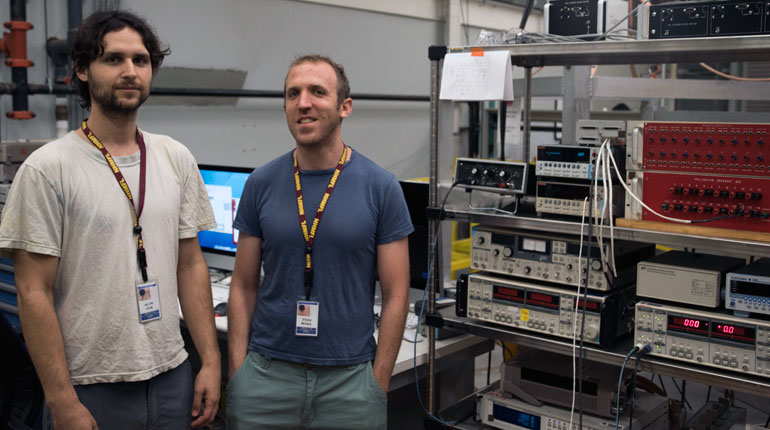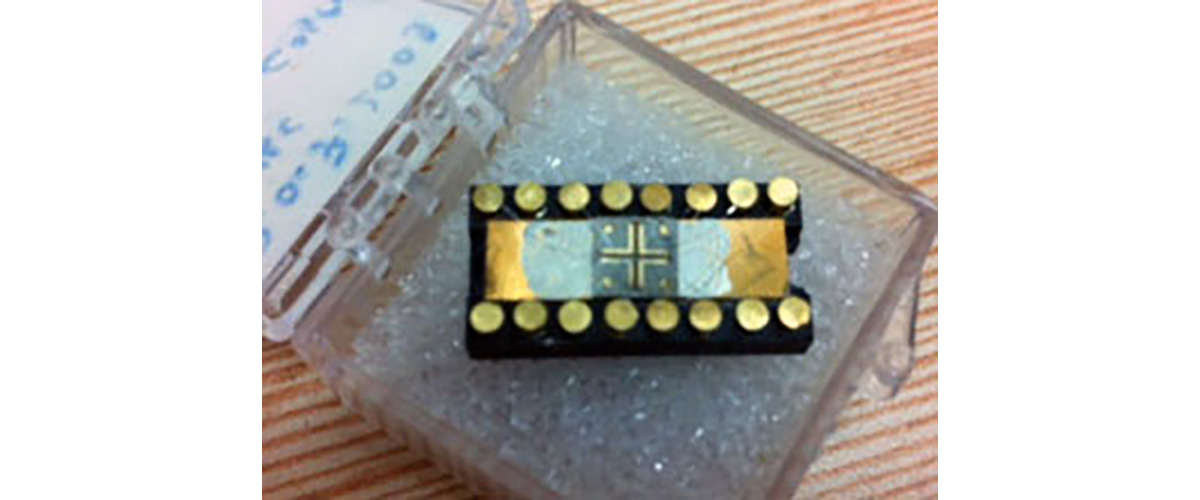Who are the scientists?
Alon Ron (left) and Eran Maniv are graduate students in physics from Tel Aviv University. They came to the MagLab in July 2015 to run an experiment in the lab's Millikelvin Facility, where scientists can study materials at very high fields and very low temperatures. They are conducting basic research — seeking to deepen our knowledge of fundamental physics without knowing necessarily where that knowledge will lead.

Alon Ron and Eran Maniv
What are they putting in the magnet?
Short answer: An oxide sandwich.
Longer answer: Ron and Maniv built a very tiny sandwich to put in the magnet. The slices of bread in this sandwich are oxides — chemical compounds that contain at least one oxygen atom and at least one other element. Their recipe called for two kinds of bread: strontium titanate (SrTiO3) and lanthanum aluminate (LaAlO3). Both compounds are insulators: They don't conduct electricity. But when you slap them together, a very interesting sandwich filling forms between them: a thin layer that is conducting.
This interface is different than its two "parent" oxides in numerous other ways: it's superconducting and ferromagnetic, among other things. The interface is what condensed matter physicists call an electron correlated system — the electrons in it influence and interact with each other in powerful, intriguing and possibly quite useful ways that you don't find in metals or semiconductors.
Why do I care?
Physicists have been paying a lot of attention to these materials in part because of their potential to lead to new nanotechnologies that are smaller, better and cheaper than existing technologies in communications, data storage and other areas. But physicists also just really like to play. And for them, the SrTiO3 / LaAlO3 interface is a fun and fertile playground.
It's also a very tiny playground. For their experiment, Ron and Maniv built infinitesimal nanostructures that have only two dimensions (like a sheet) or even one dimension (like a line). Despite the sample sizes, the potential for discovery is big. By constraining their material into fewer dimensions, the two hoped to observe new phenomena that don't exist in our three-dimensional world.
Although Ron and Maniv were researching a specific phenomenon they had observed in earlier experiments — they weren't ready to discuss exactly what — they were also exploring, probing and hoping for other discoveries. They began playing with the variables, or "turning all the knobs," as they described it: adjusting the size and shape of their sample, the strength of the magnetic field, how the sample was positioned in the field, and the temperature of the environment.
What did they expect to see?
"I don't know because it's changing all the time," said Ron. "Many times we come here and we're surprised at what we find. We just make something — we know it's a new regime in terms of size — and then we come here and we see unexpected things."
"You do all the stuff you can," added Maniv, "and then you figure out what you've got."
Story by Kristen Coyne



